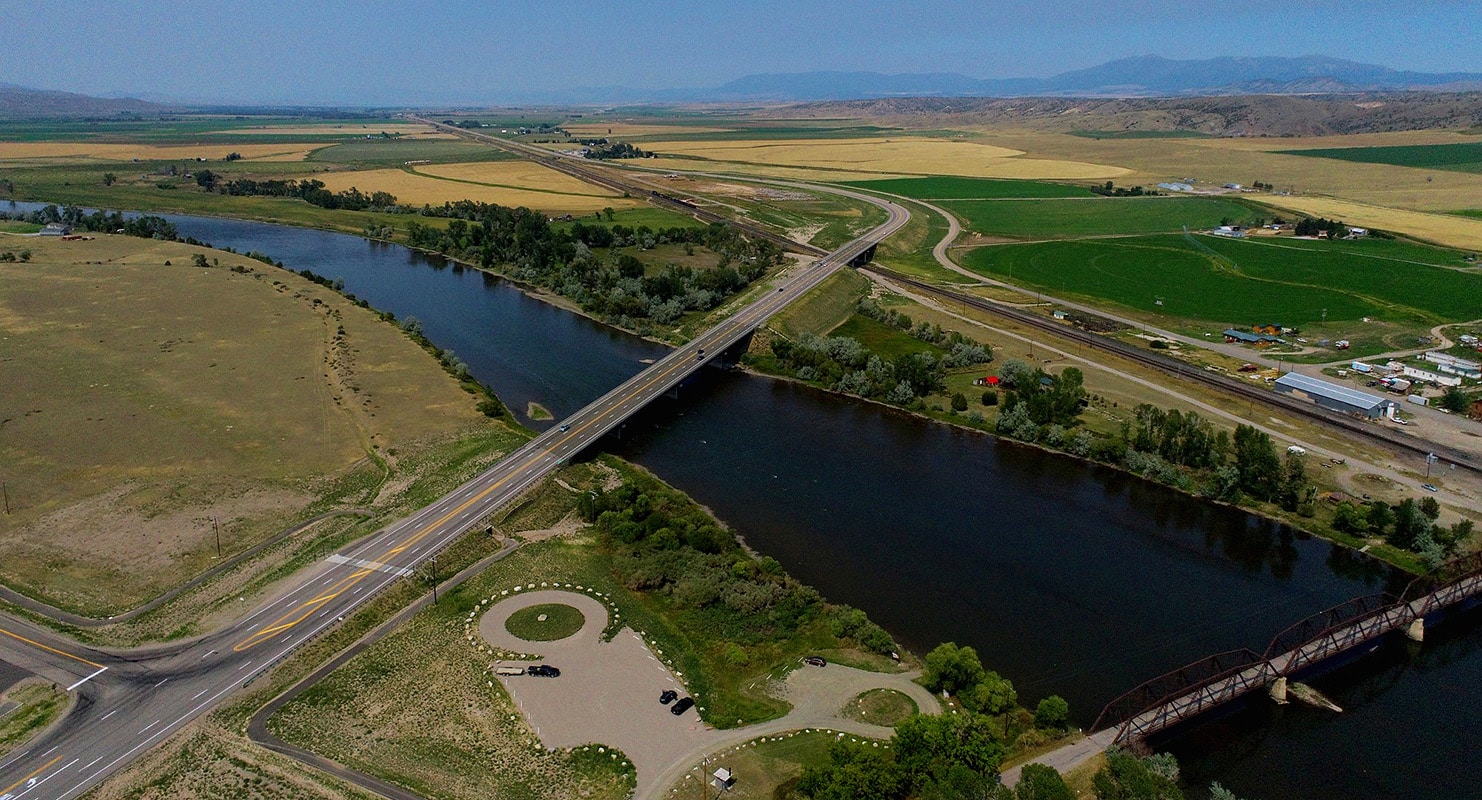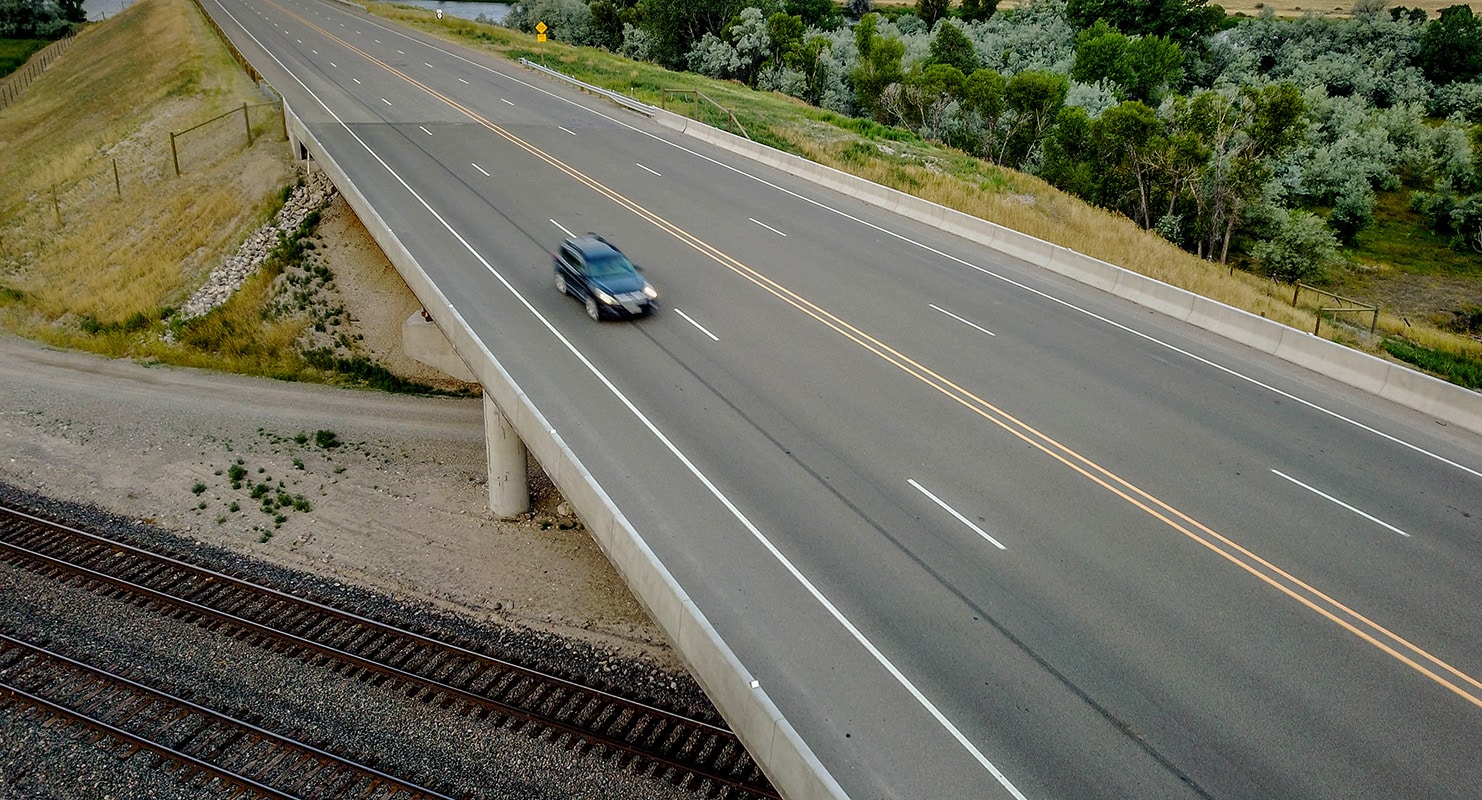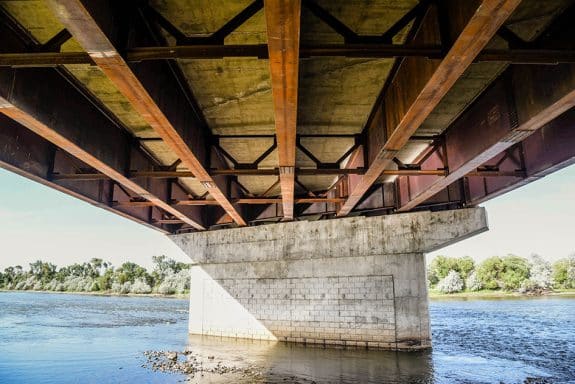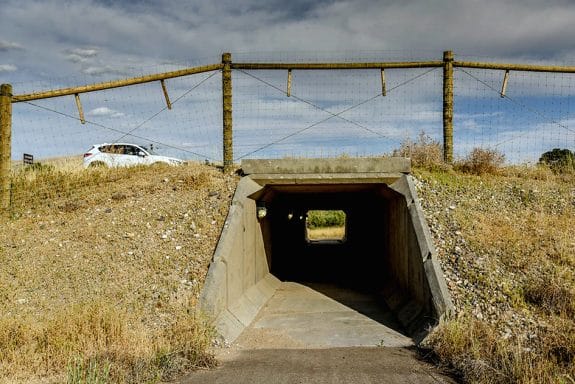MDT’s records indicated a high number of carcasses along US-287 in this area. Morrison-Maierle designed a wildlife fencing system with animal jump-out structures and experimental electrified mats to keep large animals from crossing the highway. This solution forced deer, elk, and other species to travel under the bridges instead.
Federal law protects recreational areas—like the nearby fishing access site—from being used for staging or storage during construction. On this project, the contractor negotiated with Montana Fish, Wildlife & Parks to use this access area in exchange for significant improvements. They offset the highway intersection between Toston and Radersburg to provide left-turn bays on both legs without widening the bridge over the river. The design team also provided a pedestrian underpass, connected trails, created a school bus stop, and space for snowplows to turn around.
With the completion of the $30 million Toston Structures, drivers now have the luxury and safety of driving on more than 22 miles on a four-lane highway. The finished product will serve the traveling public for many decades to come.







